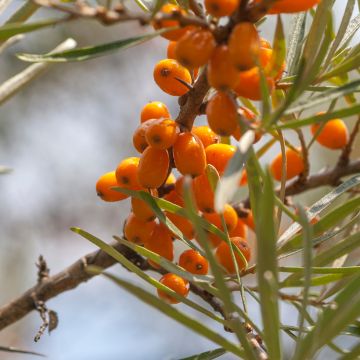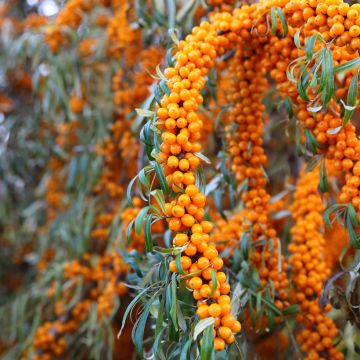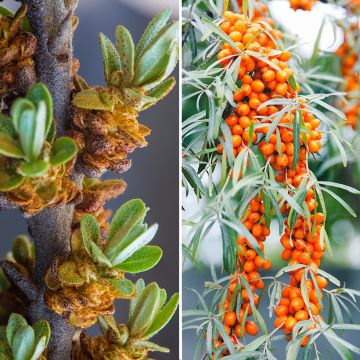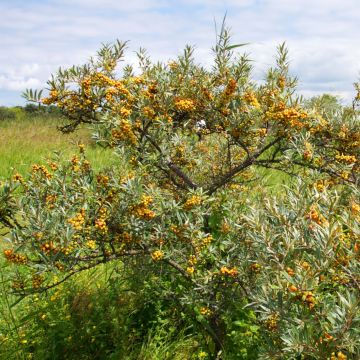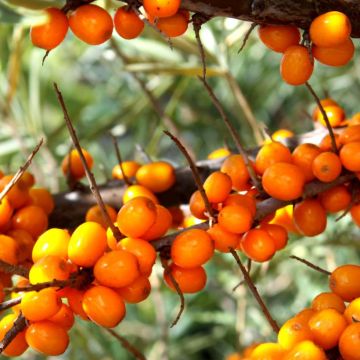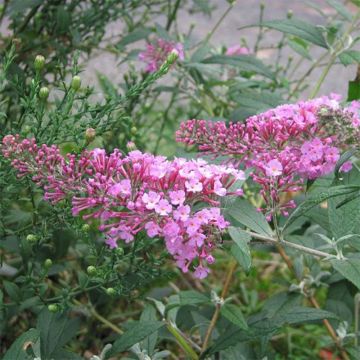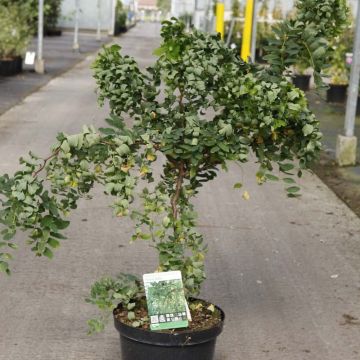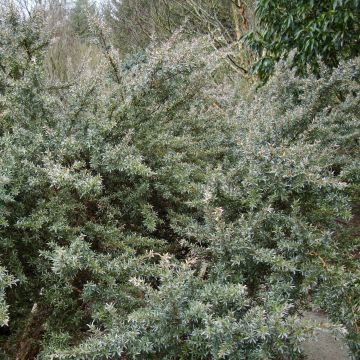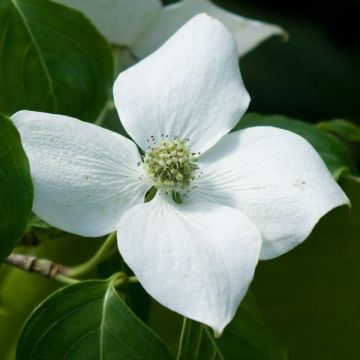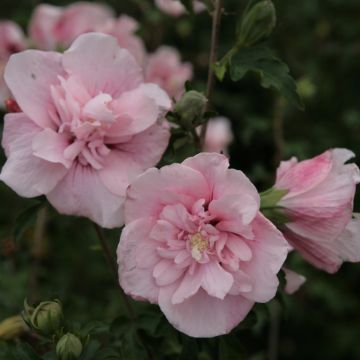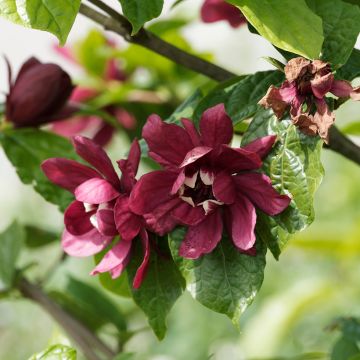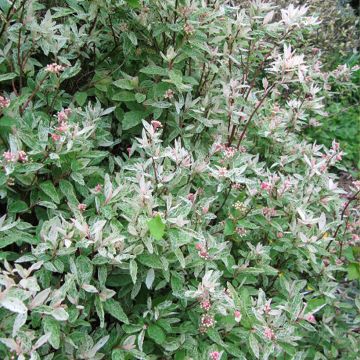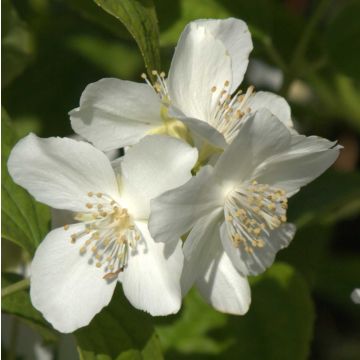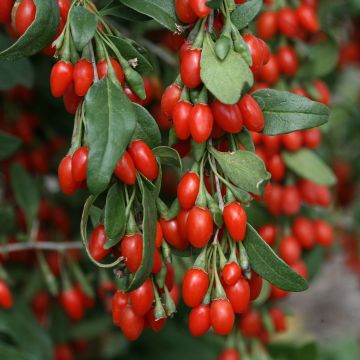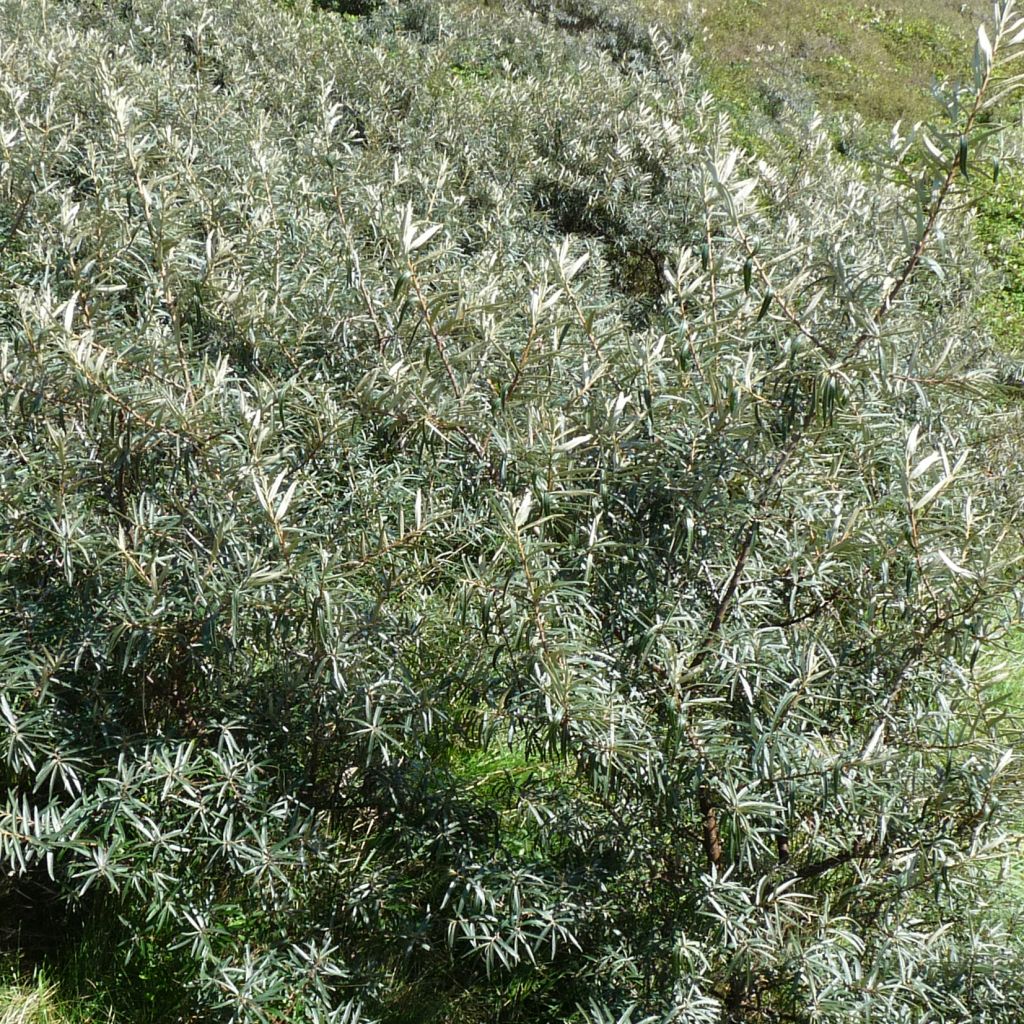

Hippophae rhamnoides Pollmix
Hippophae rhamnoides Pollmix
Hippophae rhamnoides Pollmix
Common Sea-buckthorn, Sea-buckthorn
Vigorous young plant
Catherine, 03/05/2023
This item cannot be shipped to the selected country
Delivery charge from €5.90
More information
Schedule delivery date,
and select date in basket
This plant carries a 24 months recovery warranty
More information
We guarantee the quality of our plants for a full growing cycle, and will replace at our expense any plant that fails to recover under normal climatic and planting conditions.
From €5.90 for pickup delivery and €6.90 for home delivery
Express home delivery from €8.90.


Does this plant fit my garden?
Set up your Plantfit profile →
Description
The 'Pollmix' Sea Buckthorn (Hippophae rhamnoides) is a male variety, serving as a good pollinator. This thorny shrub with fast growth thrives in ordinary or poor soils. Plant it as an informal hedge, a defensive hedge, or in isolation. Ideally plant it in autumn. Pair it with the 'Leikora' female variety for fruit production.
The sea buckthorn produces small round or oval berries, orange in colour and with a tangy flavour. Rich in vitamin C and antioxidants, these sea buckthorn berries are consumed in the form of jams, syrups, or jellies. They are also used in cosmetics as oil, extracted from the seeds and pulp.
The flowers, very small and green in colour, appear in April before the foliage. Apart from a few self-fertile varieties, sea buckthorn either bears male flowers or female flowers (dioecious plant). Fruiting then requires having a plant of the opposite sex, knowing that a male plant can pollinate three to five female plants. The berries will be produced on the female bushes from the 2nd or 3rd year. The 'Pollmix' variety is a male plant and serves as a good pollinator.
Sea buckthorn, different from the strawberry tree, is found in mountainous areas as well as on coastal dunes, helping to combat soil erosion. It is a bushy and thorny shrub with fast growth, reaching a height of 3 to 5 metres (9 feet 10 inches to 16 feet 5 inches). Its dense root system has the particularity of fixing nitrogen in the soil. Its deciduous leaves are narrow and elongated, dark green on top and silver-grey underneath. It is a very hardy shrub, able to withstand temperatures down to -30°C and also tolerant of drought. In the garden, sea buckthorn can be planted in an informal hedge, a defensive hedge, or in isolation. It will bring a decorative aspect with its orange fruits, present throughout the winter.
Report an error about the product description
Hippophae rhamnoides Pollmix in pictures
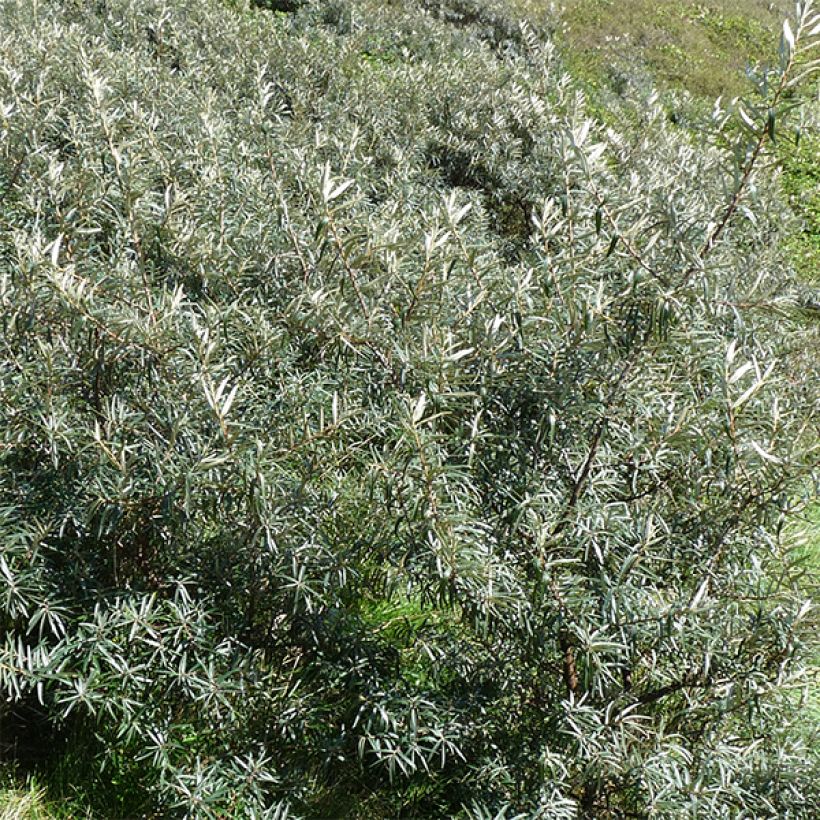

Plant habit
Flowering
Foliage
Botanical data
Hippophae
rhamnoides
Pollmix
Eleagnaceae
Common Sea-buckthorn, Sea-buckthorn
Cultivar or hybrid
Other Hippophae
Planting and care
The sea buckthorn is ideally planted in autumn or, failing that, in spring. Choose a sunny exposure. The sea buckthorn adapts to all types of soils and will thrive in ordinary or even poor soils. Soak the root ball in water for a few moments before planting. Dig a wide and deep hole. Place the root ball and cover with soil. Water at the time of planting. Afterwards, watering will not be necessary.
Robust, not very susceptible to diseases and pests, the sea buckthorn does not require any special care.
Planting period
Intended location
Care
-
, onOrder confirmed
Reply from on Promesse de fleurs
Hedge shrubs
Haven't found what you were looking for?
Hardiness is the lowest winter temperature a plant can endure without suffering serious damage or even dying. However, hardiness is affected by location (a sheltered area, such as a patio), protection (winter cover) and soil type (hardiness is improved by well-drained soil).

Photo Sharing Terms & Conditions
In order to encourage gardeners to interact and share their experiences, Promesse de fleurs offers various media enabling content to be uploaded onto its Site - in particular via the ‘Photo sharing’ module.
The User agrees to refrain from:
- Posting any content that is illegal, prejudicial, insulting, racist, inciteful to hatred, revisionist, contrary to public decency, that infringes on privacy or on the privacy rights of third parties, in particular the publicity rights of persons and goods, intellectual property rights, or the right to privacy.
- Submitting content on behalf of a third party;
- Impersonate the identity of a third party and/or publish any personal information about a third party;
In general, the User undertakes to refrain from any unethical behaviour.
All Content (in particular text, comments, files, images, photos, videos, creative works, etc.), which may be subject to property or intellectual property rights, image or other private rights, shall remain the property of the User, subject to the limited rights granted by the terms of the licence granted by Promesse de fleurs as stated below. Users are at liberty to publish or not to publish such Content on the Site, notably via the ‘Photo Sharing’ facility, and accept that this Content shall be made public and freely accessible, notably on the Internet.
Users further acknowledge, undertake to have ,and guarantee that they hold all necessary rights and permissions to publish such material on the Site, in particular with regard to the legislation in force pertaining to any privacy, property, intellectual property, image, or contractual rights, or rights of any other nature. By publishing such Content on the Site, Users acknowledge accepting full liability as publishers of the Content within the meaning of the law, and grant Promesse de fleurs, free of charge, an inclusive, worldwide licence for the said Content for the entire duration of its publication, including all reproduction, representation, up/downloading, displaying, performing, transmission, and storage rights.
Users also grant permission for their name to be linked to the Content and accept that this link may not always be made available.
By engaging in posting material, Users consent to their Content becoming automatically accessible on the Internet, in particular on other sites and/or blogs and/or web pages of the Promesse de fleurs site, including in particular social pages and the Promesse de fleurs catalogue.
Users may secure the removal of entrusted content free of charge by issuing a simple request via our contact form.
The flowering period indicated on our website applies to countries and regions located in USDA zone 8 (France, the United Kingdom, Ireland, the Netherlands, etc.)
It will vary according to where you live:
- In zones 9 to 10 (Italy, Spain, Greece, etc.), flowering will occur about 2 to 4 weeks earlier.
- In zones 6 to 7 (Germany, Poland, Slovenia, and lower mountainous regions), flowering will be delayed by 2 to 3 weeks.
- In zone 5 (Central Europe, Scandinavia), blooming will be delayed by 3 to 5 weeks.
In temperate climates, pruning of spring-flowering shrubs (forsythia, spireas, etc.) should be done just after flowering.
Pruning of summer-flowering shrubs (Indian Lilac, Perovskia, etc.) can be done in winter or spring.
In cold regions as well as with frost-sensitive plants, avoid pruning too early when severe frosts may still occur.
The planting period indicated on our website applies to countries and regions located in USDA zone 8 (France, United Kingdom, Ireland, Netherlands).
It will vary according to where you live:
- In Mediterranean zones (Marseille, Madrid, Milan, etc.), autumn and winter are the best planting periods.
- In continental zones (Strasbourg, Munich, Vienna, etc.), delay planting by 2 to 3 weeks in spring and bring it forward by 2 to 4 weeks in autumn.
- In mountainous regions (the Alps, Pyrenees, Carpathians, etc.), it is best to plant in late spring (May-June) or late summer (August-September).
The harvesting period indicated on our website applies to countries and regions in USDA zone 8 (France, England, Ireland, the Netherlands).
In colder areas (Scandinavia, Poland, Austria...) fruit and vegetable harvests are likely to be delayed by 3-4 weeks.
In warmer areas (Italy, Spain, Greece, etc.), harvesting will probably take place earlier, depending on weather conditions.
The sowing periods indicated on our website apply to countries and regions within USDA Zone 8 (France, UK, Ireland, Netherlands).
In colder areas (Scandinavia, Poland, Austria...), delay any outdoor sowing by 3-4 weeks, or sow under glass.
In warmer climes (Italy, Spain, Greece, etc.), bring outdoor sowing forward by a few weeks.


































